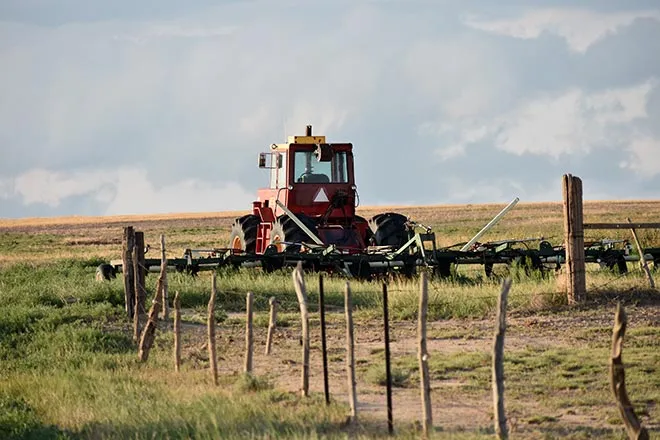
Ag stats: Colorado crop progress and condition report – week ending April 11, 2021
Dry and windy weather was prevalent throughout the state last week as spring fieldwork continued, according to the Mountain Region Field Office of the National Agricultural Statistics Service, USDA.
In northeastern counties, planting preparations progressed but soil temperatures remained cold. A county report noted cold temperatures held winter wheat progress back slightly in the area. A county report also noted crop producers expressed concern regarding possible reduced irrigation water supplies this season. Calving and lambing continued with some producers nearing completion. Lack of received moisture and high winds remained very concerning for crop and pasture conditions moving forward.
East central counties received isolated and welcome moisture last week. High winds were also observed, counteracting most benefits of the observed precipitation.
In southwestern counties, no moisture was received las week. Extremely high winds were reported. Most of the district remained in extreme to exceptional drought according to the latest U.S. Drought Monitor report.
The San Luis Valley experienced another dry week with cool temperatures. Barley planting continued but not as quickly as the prior week. Some producers began irrigating last week. A county report noted the possibility of fewer barley acres planted this year due to water supply concerns.
In southeastern counties, winter wheat condition continued to improve from prior moisture, but more is needed to sustain the crop going forward. High winds were reported last week. Warmer temperatures also supported alfalfa growth.
As of April 9, 2021, snowpack in Colorado was 79 percent measured as percent of median snowfall. The Southwest and San Luis Valley were 71 and 90 percent, respectively.
Stored feed supplies were rated 20 percent very short, 27 percent short, 52 percent adequate, and 1 percent surplus.
Sheep death loss was 2 percent heavy, 61 percent average, and 37 percent light.
Cattle death loss was 5 percent heavy, 66 percent average, and 29 percent light.
CROP AND LIVESTOCK PROGRESS | ||||
Commodity | Current week | Previous week | Previous year | 5-year average |
(percent) | (percent) | (percent) | (percent) | |
Barley | ||||
Planted | 30 | 26 | 34 | 24 |
Onions | ||||
Planted | 3 | -- | 9 | 19 |
Winter wheat | ||||
Pastured | 14 | 18 | 11 | 15 |
Jointed | 19 | 9 | 11 | 11 |
Cattle and calves | ||||
Cows calved | 84 | 77 | 80 | 75 |
Sheep and lambs | ||||
Ewes lambed | 70 | 61 | 80 | 69 |
DAYS SUITABLE FOR FIELDWORK AND SOIL MOISTURE CONDITION | ||||
Current week | Previous week | Previous year | 5-year average | |
Days suitable for fieldwork | 6.4 | 6.4 | 6.3 | 5.5 |
Topsoil moisture | (percent) | (percent) | (percent) | (percent) |
Very short | 15 | 13 | 17 | 11 |
Short | 38 | 39 | 30 | 21 |
Adequate | 47 | 48 | 51 | 64 |
Surplus | -- | -- | 2 | 4 |
Subsoil moisture | ||||
Very short | 31 | 29 | 13 | 11 |
Short | 35 | 41 | 22 | 24 |
Adequate | 34 | 30 | 65 | 64 |
Surplus | -- | -- | -- | 1 |
CROP, LIVESTOCK, PASTURE AND RANGE CONDITION | ||||
Commodity | Current week | Previous week | Previous year | 5-year average |
(percent) | (percent) | (percent) | (percent) | |
Pasture and range | ||||
Very poor | 23 | 24 | 4 | 9 |
Poor | 30 | 34 | 11 | 16 |
Fair | 37 | 32 | 29 | 34 |
Good | 10 | 10 | 54 | 38 |
Excellent | -- | -- | 2 | 3 |
Winter wheat | ||||
Very poor | 13 | 15 | 14 | 6 |
Poor | 21 | 19 | 18 | 13 |
Fair | 40 | 39 | 28 | 33 |
Good | 23 | 24 | 38 | 42 |
Excellent | 3 | 3 | 2 | 6 |
Livestock | ||||
Very poor | 3 | 4 | 1 | -- |
Poor | 8 | 7 | 4 | 3 |
Fair | 27 | 21 | 21 | 19 |
Good | 55 | 64 | 66 | 71 |
Excellent | 7 | 4 | 8 | 7 |
















